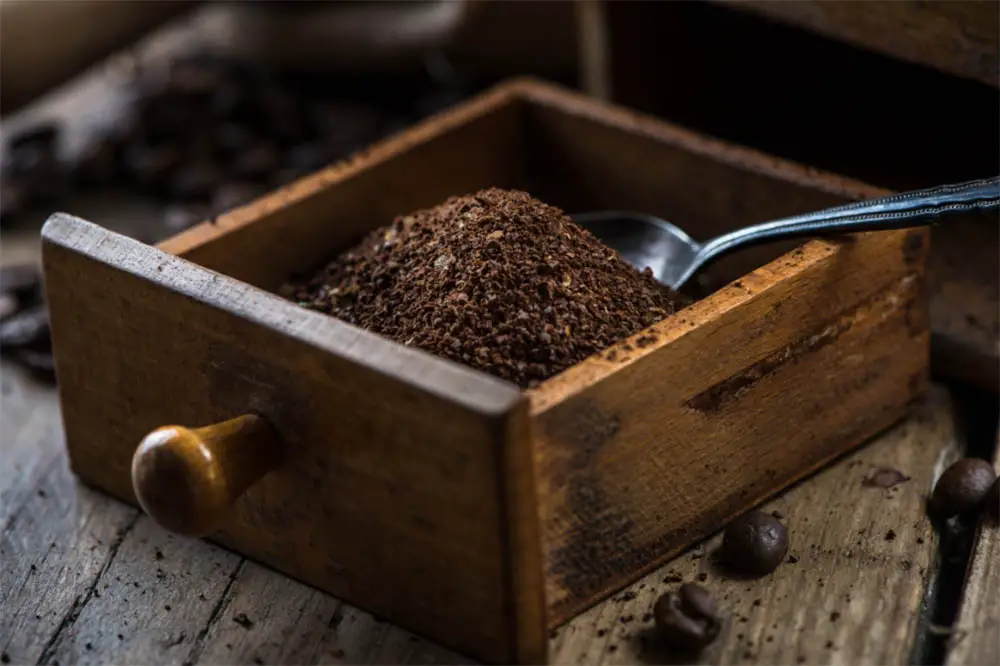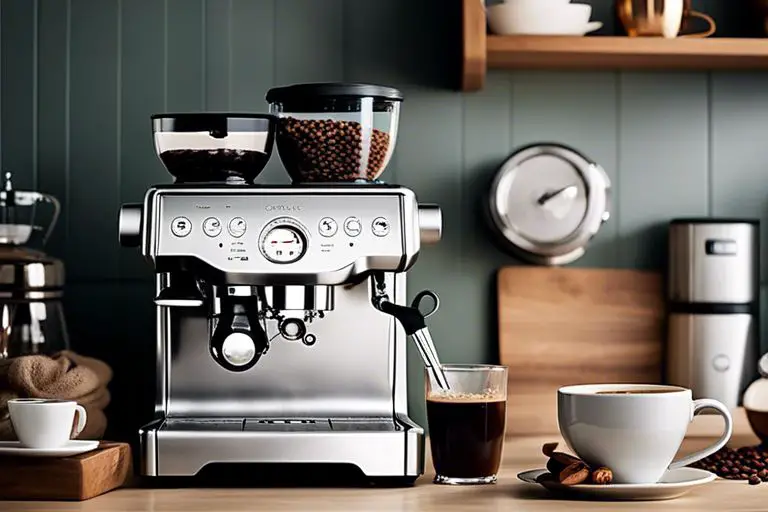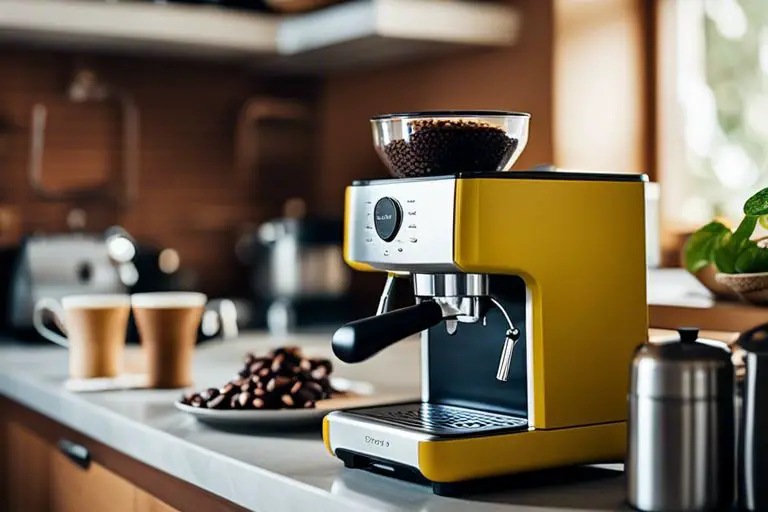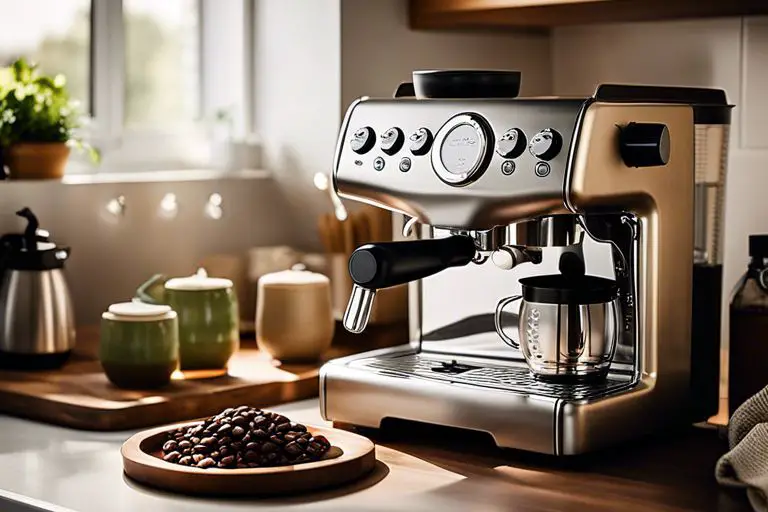I’m a traditionalist, so for me, black coffee is cool – Graham Elliot
There’s a lot more to making coffee than just adding hot water to a spoonful of off-the-shelf, instant granules in a mug, stirring them together, and hoping for the best.
Making a cup of java is an art form that requires patience, diligence, and relies on you knowing that if you want to experience all the joy and flavour in every molecule of coffee, you need to commit to the process wholeheartedly and without reservation.
After all, a good cup of coffee can set you up for the day, while a bad cup of coffee can spoil it before it even starts.
Every good cup of joe starts with the same ingredients, coffee beans.
As long as you use good quality beans to make your coffee, everything else should fall into place, and you can sit back and savour the deep, rich happiness that every mouthful of your brew will gradually fill your soul with.
But what if you don’t have a coffee grinder? How can you make a great cup of coffee if you can’t grind the beans that you need to make it with?
The truth is, you don’t actually need a grinder to make great coffee using coffee beans. Sure, it’s nice to have one, but you don’t need one to grind your beans to make your morning cup of coffee.
And we’re going to share the four easiest ways to grind coffee beans without having to submit to the additional expense of adding a coffee grinder to your kitchen countertop.
Blend Them Up, Grind Them Down
If you’re already armed with a food processor or blender, then you’re good to go and ready to start grinding as much coffee as you’ll ever need.
All you need to do is add the desired amount of coffee beans to your blender (the general rule of thumb is for every cup of coffee that you’re going to brew, you’ll need to grind one tablespoon of beans in order to make it), switch the pulse setting on, press start and stand back and let your blender go to work.
Blending coffee beans achieves almost the same results as grinding them, and once your blender has finished doing its job, the ground coffee sitting in it should be almost uniform, which means that you’ll be able to extract every atom of flavor from it whether you’re brewing your first, second or fifth cup of the day.
Coffee beans and granules are insidious though, and they can and do find their way into the most unexpected places, so if you are going to blend your beans instead of grinding them, make sure that you thoroughly clean your blender when you’ve finished.
Any left-over beans and granules can, and will, build up over time and throw a coffee-shaped spanner into the works of your blender and block it, which could cause the motor to burn out.
But as long as you’re careful, and take the time to thoroughly clean your blender when you’ve finished, you’ll be okay and will be able to carry on blending coffee beans for as long as you want to.
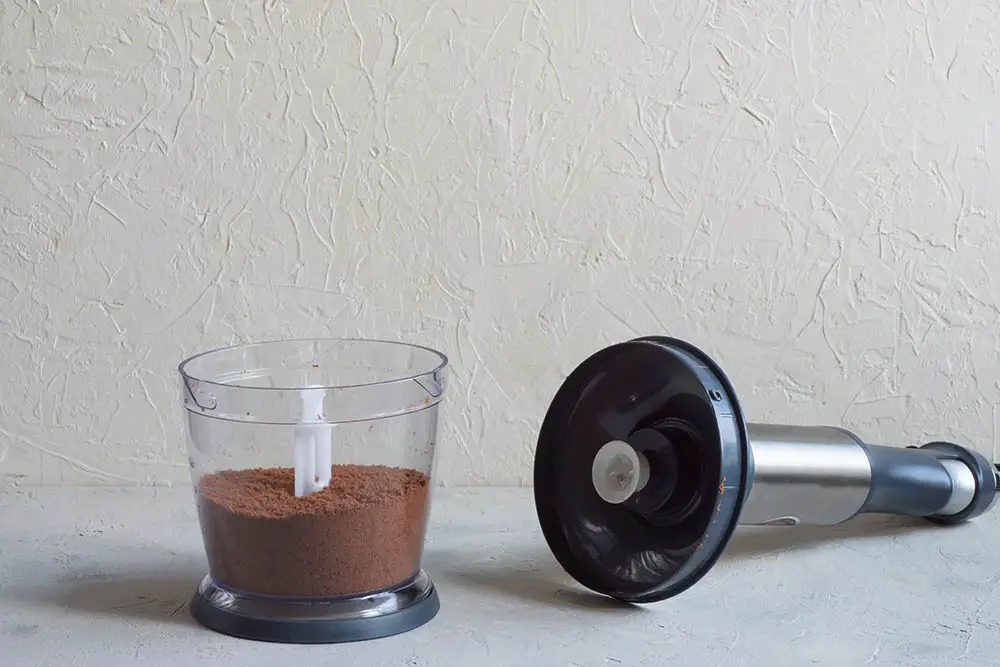
Pestle And Mortar
Remember what we said about patience being key to making a good cup of coffee?
Well, you’ll need a lot of it if you’re going to pursue the pestle and mortar method of grinding coffee beans, but it will be worth it in the end.
Measure the required amount of beans that you want to grind into a cup (the rule is still the same, one tablespoon of beans for every cup of coffee that you want to brew), and then add the beans to the pestle and mortar one spoonful at a time and start grinding.
The more beans that you put in the mortar, the longer that it’ll take you to grind them with the pestle.
We’ve found that the most efficient, and time friendly way to grind coffee this way is by doing it one spoonful at a time, and after you’ve finished grinding each spoonful of beans, pour the ground coffee into your coffee maker and repeat the process until you’ve finished grinding and are ready to start brewing.
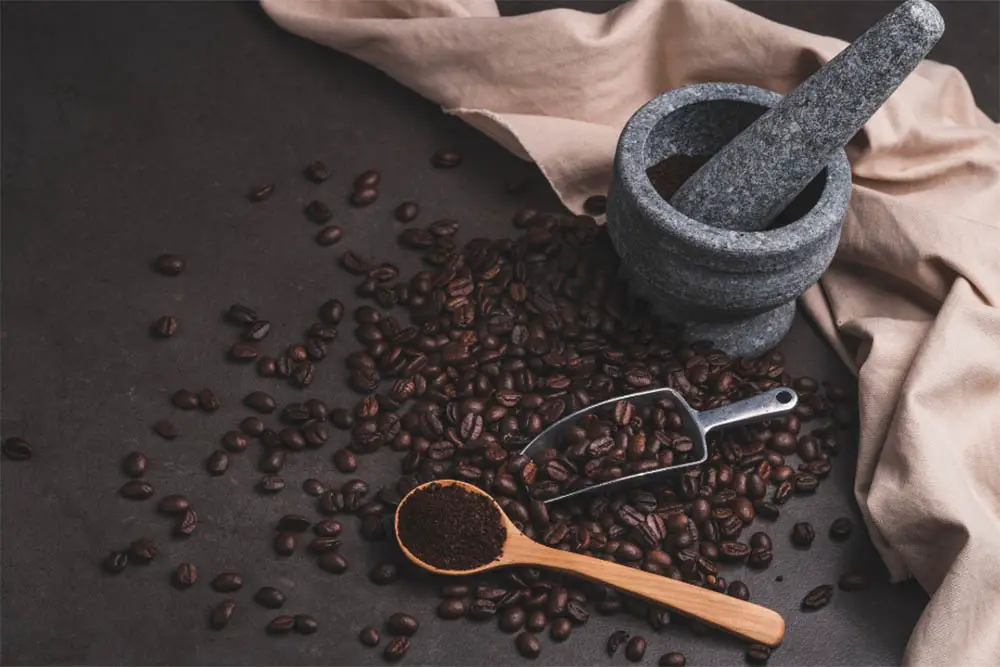
Pressing By Hand
If you adore spending time in your kitchen, whipping up a plethora of culinary delights and treats, then you’ll probably have either a garlic press or a hand mincer in your cooking arsenal.
And if you’ve got one, then you’ll know exactly how to use it. Just measure out the number of beans that you want to grind or in this case press and crush, and start preparing them for your brew a little bit at a time.
There are a few issues with this method that we need to address. Coffee beans are a lot harder than garlic and mince are, so unless you’re blessed with serious hand strength, it might be wiser to steer clear of the handheld crushing method in order to avoid potentially injuring yourself.
The second problem is that you might need to run the beans through your chosen press a couple of times to make sure that the grounds are small enough to make great coffee with.
Crushed By A Roller
Our favorite method of grinding coffee beans without a coffee grinder is by crushing them with a rolling pin. Measure the amount of beans that you want to use for your brew and put them in a ziplock bag, then seal it and make sure that you’ve forced all of the air out of the bag.
Place the bag on your kitchen counter, and then give it a few good hits (to break up the beans) with the rolling pin.
Once you’ve finished battering the beans, use the rolling pin to slowly and methodically crush the rest of the beans by rolling it back and forth over the bag until you’re satisfied that the granules are small enough to start brewing with.
Then add the granules to your filter machine, hit the start button and sit back and get ready to enjoy the great taste of freshly brewed coffee.

